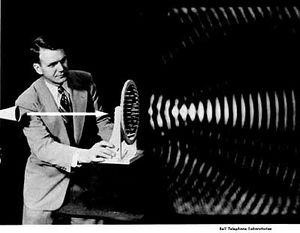Calibrating
Calibrating is a comparison between measurements – one of known magnitude or correctness made or set with one device and another measurement made in as similar a way as possible with a second device.The device with the known or assigned correctness is called the standard. The second device is the unit under test, test instrument, or any of several other names for the device being calibrated.It is used to check, adjust, or standardize a measuring instrument, usually by comparing it with an accepted model and to measure the diameter of the inside of a tube.
Calibration versus metrology
There is no consistent demarcation between calibration and metrology. Generally, the basic process below would be metrology-centered if it involved new or unfamiliar equipment and processes. For example, a calibration laboratory owned by a successful maker of microphones would have to be proficient in electronic distortion and sound pressure measurement. For them, the calibration of a new frequency spectrum analyzer is a routine matter with extensive precedent. On the other hand, a similar laboratory supporting a coaxial cable manufacturer may not be as familiar with this specific calibration subject. A transplanted calibration process that worked well to support the microphone application may or may not be the best answer or even adequate for the coaxial cable application. A prior understanding of the measurement requirements of coaxial cable manufacturing would make the calibration process below more successful.
